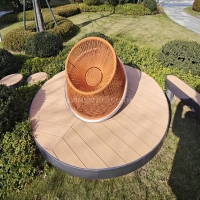Welcome to the website for landscape facilities products and knowledge.
How does the design of the trash can impact its resistance to damage from garden waste?
The design of a trash can plays a crucial role in determining its ability to withstand damage from garden waste. Garden waste, such as branches, leaves, and soil, can be abrasive and heavy, demanding a robust construction.
Material Choice: High-density polyethylene (HDPE) or powder-coated steel bins resist scratches and dents better than flimsy plastic. These materials also endure UV rays and moisture, preventing cracks or rust.
Structural Integrity: A reinforced base and thicker walls distribute weight evenly, reducing stress points. Bins with rounded edges minimize snagging from sharp branches, while seamless designs avoid weak joints.
Lid and Ventilation: A secure, tight-fitting lid prevents overflow and keeps pests out. Ventilation holes reduce moisture buildup, which can weaken the structure over time.
Mobility and Stability: Wheels or handles should be sturdy enough for heavy loads, while a wide base prevents tipping in windy conditions.
By prioritizing these design elements, trash cans can better endure the rigors of garden waste, ensuring longevity and functionality in outdoor settings.
Related search:

Recommendation
Swivel chair-Specialty steel structure woven rattan leisure chair with rotatable design